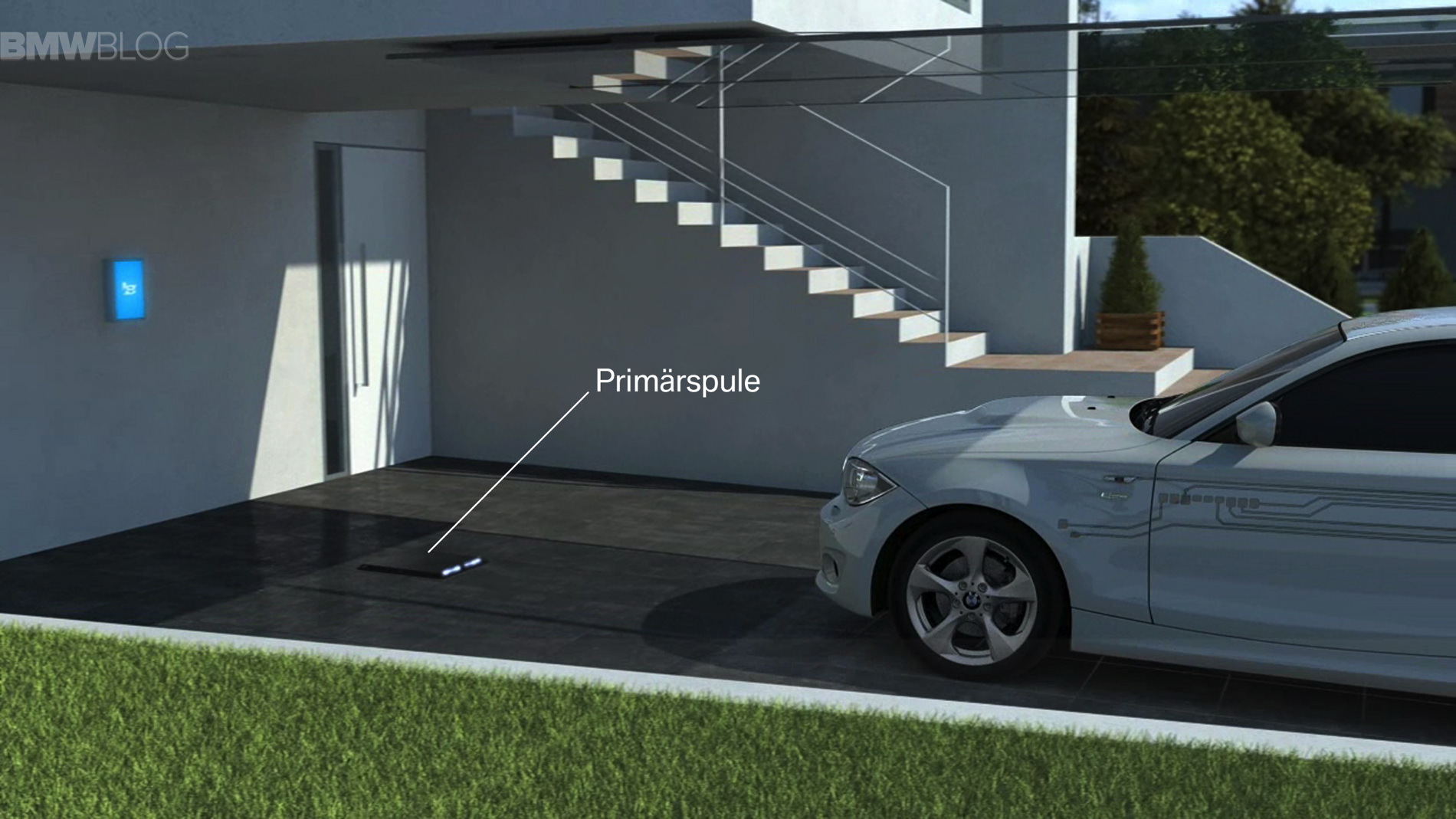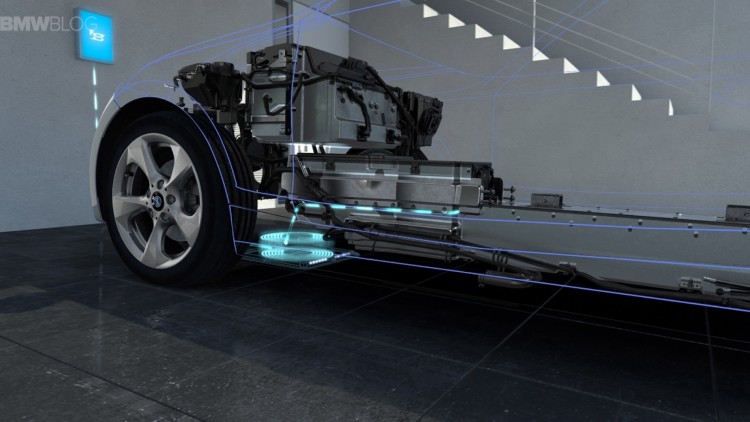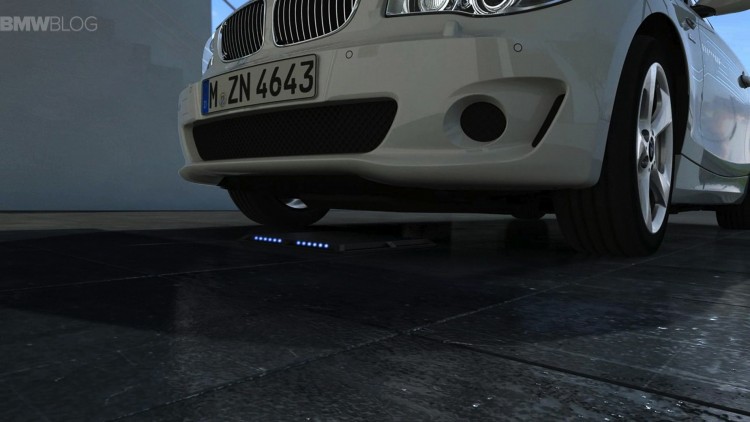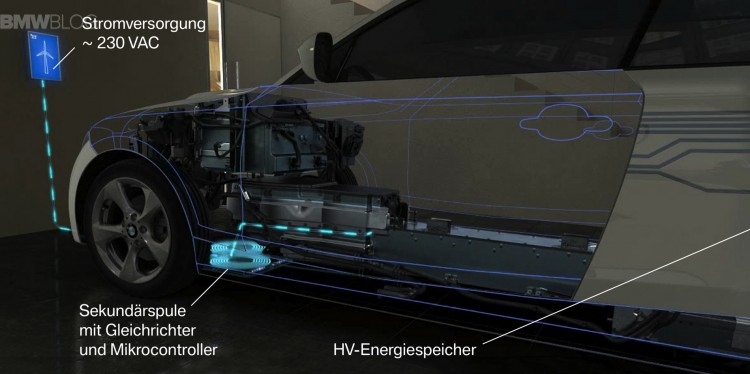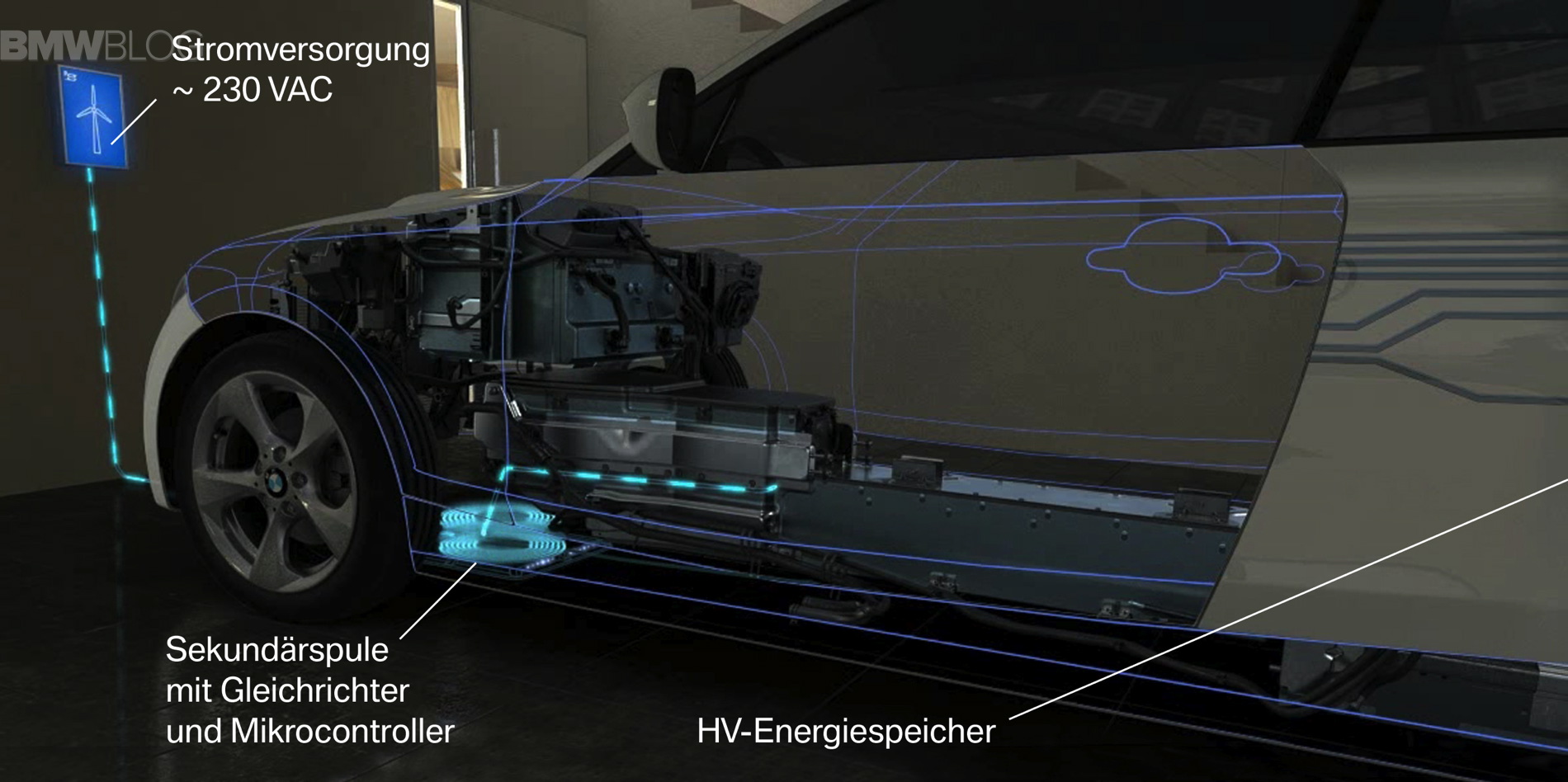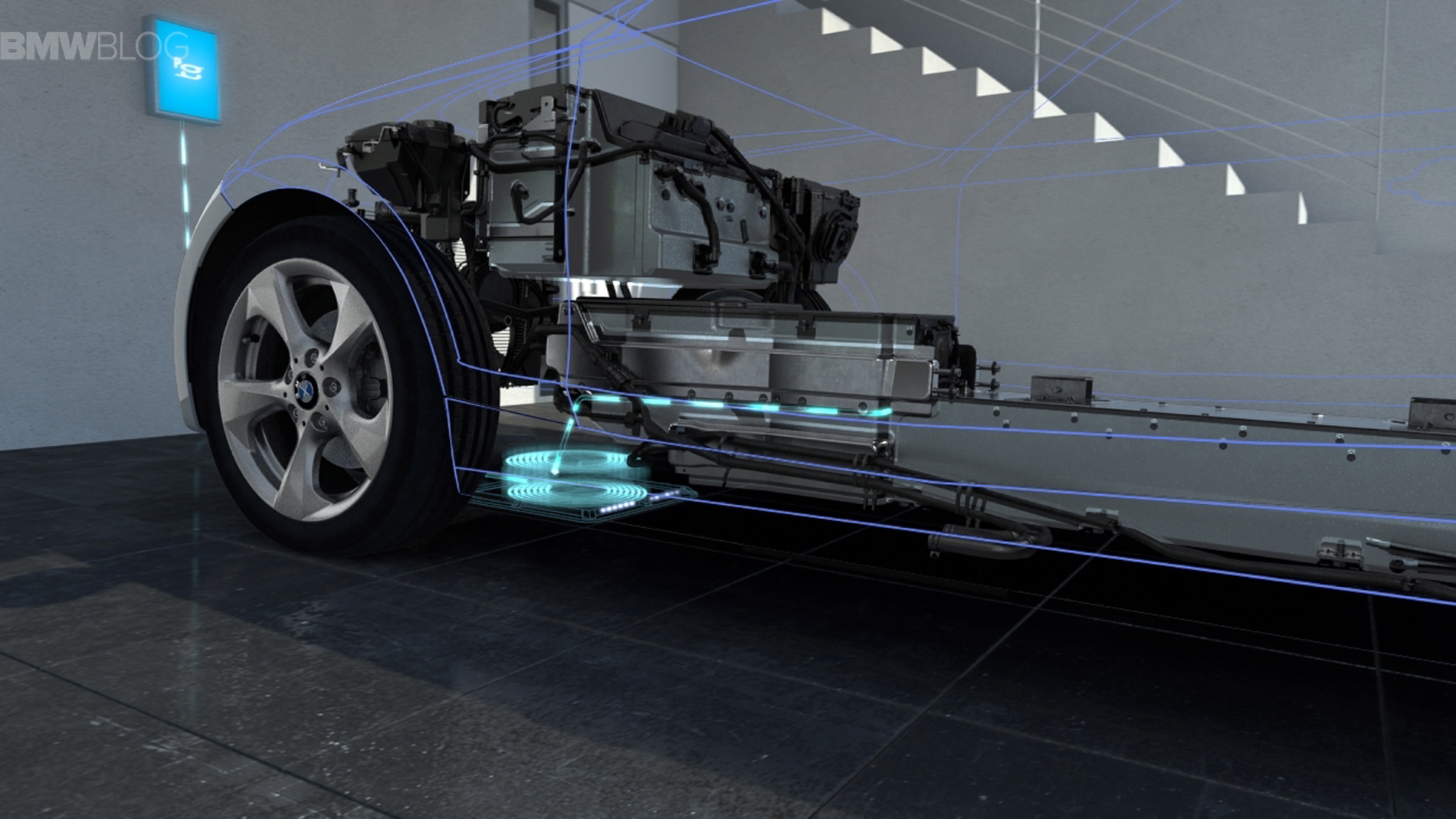Powered by high-voltage EV batteries, the first premium all-electric vehicle – the BMW i3 – and the BMW i8 plug-in hybrid sports car can be driven with zero tailpipe emissions. As a fast and simple solution for battery charging via a hardwired connection, BMW i offers the Wallbox.
At 2015 CES, BMW will present an alternative solution: in a BMW i8 it will demonstrate a research application for inductive – i.e. wireless – battery charging.
Contact-free power transfer between coils.
Inductive charging provides reliable, wear-free and user-friendly EV battery charging using a magnetic field, without the need for a hard-wired connection between the vehicle and the power source. The system comprises a primary and a secondary coil. The primary coil is fitted in a base pad underneath the vehicle, for example on or embedded in the garage floor.
The secondary coil is integrated in the underside of the BMW i8. As soon as the vehicle is positioned over the base pad and the charging process begins, an alternating magnetic field is generated which transmits electricity between the coils. The electricity is transmitted without cables or contacts across a gap of several centimeters, at a charge rate of 3.3 kW. The high-voltage battery of the BMW i8 can be fully recharged in less than two hours using this system – which is approximately the same amount of time required with a wired connection. Future inductive charging systems with a higher charge rate of 7 kW will also allow the larger batteries of all-electric vehicles, such as the BMW i3, to be fully recharged overnight. In typical accessible areas immediately next to the vehicle, the electromagnetic field strength during inductive charging is well below the existing regulatory limits. The electromagnetic radiation is less than that emitted by an induction hotplate on a kitchen stove.
Trouble-free inductive charging even in snow or in the wet.
The key requirement for an optimal charging process is the correct relative positioning of the two coils. A parking assistant ensures that the BMW i8 is parked so that its secondary coil, which is located centrally between the front wheels on the underside of the vehicle, is positioned precisely over the primary coil in the base pad. The system launches the charging process automatically, but only if the coils are correctly aligned and there is no obstruction to the power transfer – for example due to foreign objects situated between the vehicle and base pad. Since all the system’s electric components are protected, inductive charging is possible even in rain or snow.
Inductive charging offers important convenience benefits for drivers of electric or plug-in hybrid vehicles: they no longer have to connect a cable to a charging station, for example. At the same time, charging begins automatically and is continuously monitored. This ensures the BMW always offers an optimal range for zero-tailpipe-emission electric driving.
Just as when charging the vehicle with the BMW i Wallbox, inductive charging can also be activated and monitored using a smartphone app. Amongst other things the app shows the current charging status, remaining time to complete a full charge and potential driving range.


